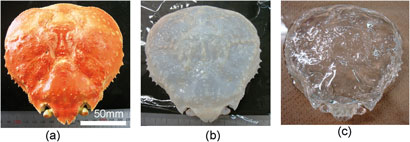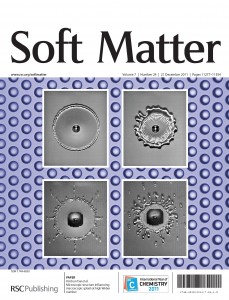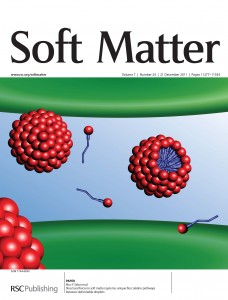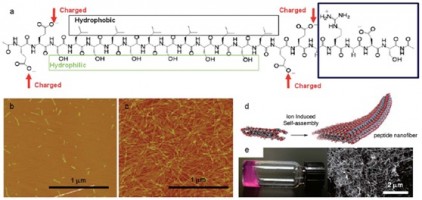This month sees the following articles in Soft Matter that are in the top ten most accessed for November:
Self-Folding of Polymer Sheets Using Local Light Absorption
Ying Liu, Julie K. Boyles, Jan Genzer and Michael D. Dickey
Soft Matter, 2012, Advance Article
DOI: 10.1039/C1SM06564E
Dynamic self-assembly of photo-switchable nanoparticles
Prateek K. Jha, Vladimir Kuzovkov, Bartosz A. Grzybowski and Monica Olvera de la Cruz
Soft Matter, 2012, 8, 227-234
DOI: 10.1039/C1SM06662E
Hydrophilic and superhydrophilic surfaces and materials
Jaroslaw Drelich, Emil Chibowski, Dennis Desheng Meng and Konrad Terpilowski
Soft Matter, 2011, 7, 9804-9828
DOI: 10.1039/C1SM05849E
Synthesis of single chain thermoresponsive polymer nanoparticles
Nerea Ormategui, Ignacio García, Daniel Padro, Germán Cabañero, Hans J. Grande and Iraida Loinaz
Soft Matter, 2012, 8, 734-740
DOI: 10.1039/C1SM06310C
Thermoresponsive nanocomposite double network hydrogels
Ruochong Fei, Jason Thomas George, Jeehyun Park and Melissa Ann Grunlan
Soft Matter, 2012, 8, 481-487
DOI: 10.1039/C1SM06105D
Photo-driven pulsating vesicles from self-assembled lipid-like azopolymers
Jinhua Hu, Hui Yu, Leong Huat Gan and Xiao Hu
Soft Matter, 2011, 7, 11345-11350
DOI: 10.1039/C1SM06495A
From soft to hard: the generation of functional and complex colloidal monolayers for nanolithography
Nicolas Vogel, Clemens K. Weiss and Katharina Landfester
Soft Matter, 2012, Advance Article
DOI: 10.1039/C1SM06650A
Amphiphilic copolymer brush with random pH-sensitive/hydrophobic structure: synthesis and self-assembled micelles for sustained drug delivery
You Qiang Yang, Xin Dong Guo, Wen Jing Lin, Li Juan Zhang, Can Yang Zhang and Yu Qian
Soft Matter, 2012, 8, 454-464
DOI: 10.1039/C1SM06314F
Computer simulations of fusion, fission and shape deformation in lipid membranes
Kai Yang and Yu-qiang Ma
Soft Matter, 2012, 8, 606-618
DOI: 10.1039/C1SM05903C
Non-equilibrium cluster states in colloids with competing interactions
Tian Hui Zhang, Jan Klok, R. Hans Tromp, Jan Groenewold and Willem K. Kegel
Soft Matter, 2012, 8, 667-672
DOI: 10.1039/C1SM06570J
Why not take a look at the articles today and blog your thoughts and comments below.
Fancy submitting an article to Soft Matter? Then why not submit to us today!
To keep up-to-date with all the latest research, sign up for the Soft Matter e-Alert or RSS feeds or follow Soft Matter on Twitter or Facebook.











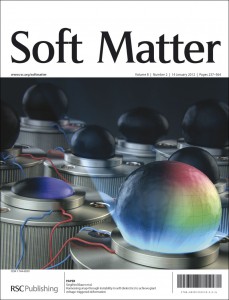
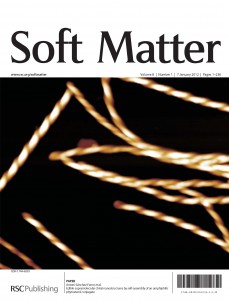 The outside front cover features an article on
The outside front cover features an article on 

